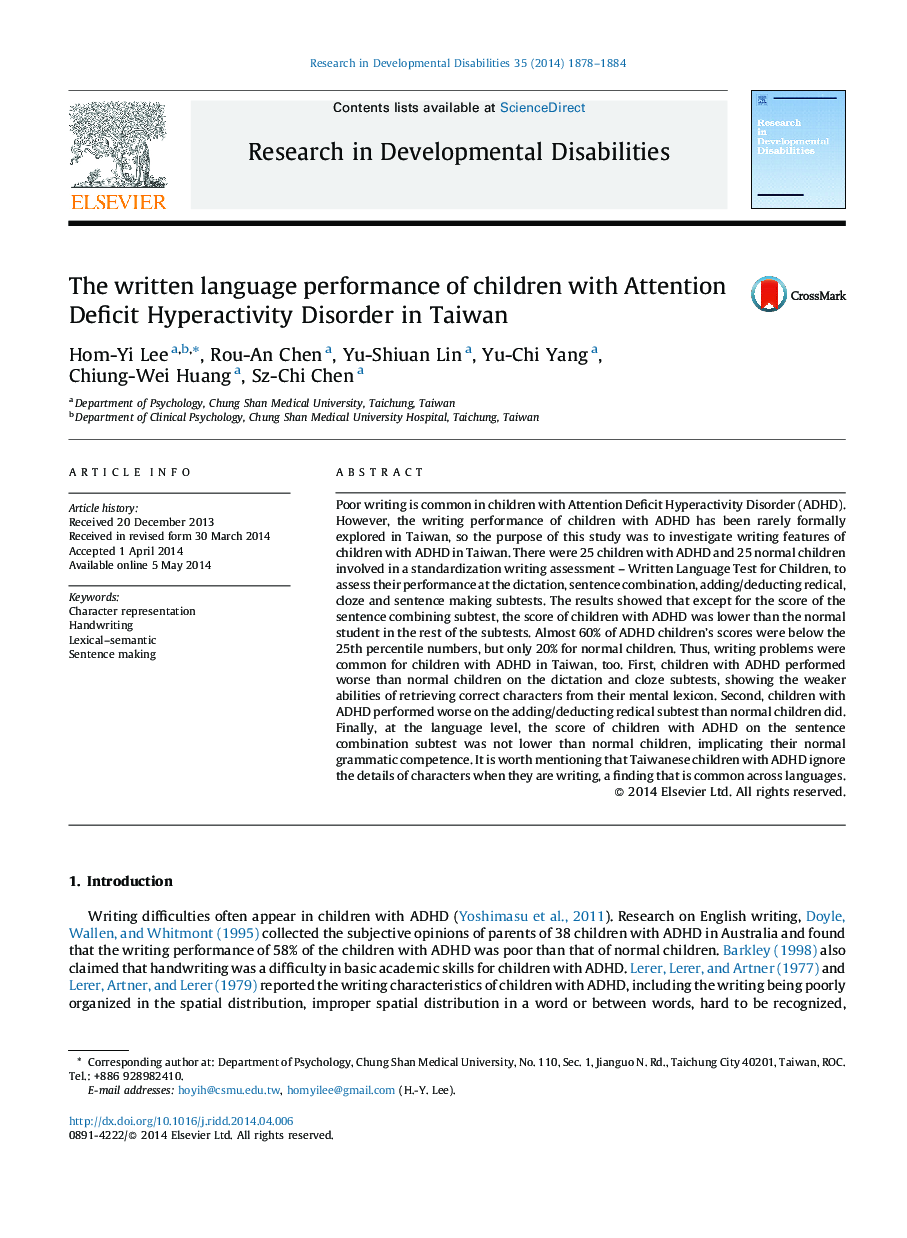| Article ID | Journal | Published Year | Pages | File Type |
|---|---|---|---|---|
| 371503 | Research in Developmental Disabilities | 2014 | 7 Pages |
•Almost 60% of ADHD children's scores are below the 25th percentile numbers, but only 20% for normal children.•Taiwanese children with ADHD performed the weaker abilities of retrieving correct characters from their mental lexicon.•Taiwanese children with ADHD wrote more graphemic similar characters than normal children, a finding that is common across languages.•Taiwanese children with ADHD did not make transposition errors as Hebrew children with ADHD.
Poor writing is common in children with Attention Deficit Hyperactivity Disorder (ADHD). However, the writing performance of children with ADHD has been rarely formally explored in Taiwan, so the purpose of this study was to investigate writing features of children with ADHD in Taiwan. There were 25 children with ADHD and 25 normal children involved in a standardization writing assessment – Written Language Test for Children, to assess their performance at the dictation, sentence combination, adding/deducting redical, cloze and sentence making subtests. The results showed that except for the score of the sentence combining subtest, the score of children with ADHD was lower than the normal student in the rest of the subtests. Almost 60% of ADHD children's scores were below the 25th percentile numbers, but only 20% for normal children. Thus, writing problems were common for children with ADHD in Taiwan, too. First, children with ADHD performed worse than normal children on the dictation and cloze subtests, showing the weaker abilities of retrieving correct characters from their mental lexicon. Second, children with ADHD performed worse on the adding/deducting redical subtest than normal children did. Finally, at the language level, the score of children with ADHD on the sentence combination subtest was not lower than normal children, implicating their normal grammatic competence. It is worth mentioning that Taiwanese children with ADHD ignore the details of characters when they are writing, a finding that is common across languages.
